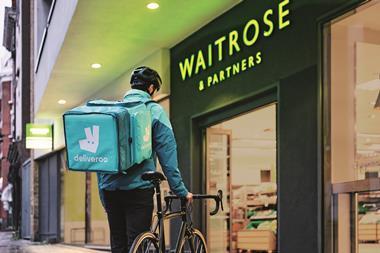If there's anyone out there still debating the pros and cons of retail-ready packaging (RRP), they need to wake up and smell the corrugated cardboard: RRP is here to stay. The challenge now is to come up with solutions that work for everyone, not just retailers, says Jason Bunce, customer service and logistics director, UK and Ireland, at Colgate Palmolive, and co-chair of ECR UK's Retail Packaging Work Group.
Working with retailers, manufacturers and packaging suppliers, the group set itself a remit of developing an RRP strategy that made it easy to identify, easy to replenish, easy to shop and easy on the environment.
Now, reveals Bunce, it is embarking on a wide-ranging project to analyse, optimise and where possible standardise RRP in the UK - benefiting suppliers and consumers as well as retailers.
Cost is perhaps the single biggest concern identified by suppliers in IGD's recent International Shelf Ready Packaging report (see box). In response to calls for a detailed cost-benefit analysis, ECR plans to assess exactly who benefits and how much.
It is also working in partnership with Nottingham University to assess the impact of RRP on the UK grocery market. A three-month research project will begin in September.
Although the UK has become a hotbed of RRP development since Sainsbury and Asda joined Tesco in the fray, according to the report, there are still key areas in which it lags behind some of its European counterparts.
A major bugbear for suppliers is that it is difficult to work out what the optimal dimensions of the packaging should be when there's so much variance in shelf sizes.
In the Nordic region, there's no such problem because they have standardised shelf sizes, says Tarun Patel, head of supply chain at IGD. The same needs to happen in the UK if manufacturers are to more enthusiastically embrace RRP. The ECR group has already published the dimensions of the shelving that is currently in use and the next stage, says Bunce, is to look at whether there is scope to standardise any of it.
The good news as far as suppliers are concerned is that retailers are considering it, he says. "There's so much out there that it will take time to replenish the shelving stock, but there's a desire to look at it. The group is looking to see where the main opportunities lie."
Code dating is another area where Bunce believes there is potential for greater convergence. "The starting point is easy: there's nothing at the moment."
He highlights some of the potential easy wins. "There are common sense things such as not having black ink against a dark background. You can also look at the positioning," he says.
The group is working with retailers to see how efficiently staff are handling night fills. It is also looking at the feasibility of dropping dates that specify shelf life to the day in favour of dates specifying the month or week.
However, Bunce warns, it is unlikely to be able to create a uniform standard given a supply base that is European and global. "The opportunity is to converge rather than define specific standards."
Aside from the obvious aesthetic challenges posed by RRP, it can also make it harder for consumers and staff alike to access and identify products, according to the report. For retail staff this can be a particular problem in the store room. So the group is assessing the potential of standardised branding and symbols such as Christmas trees for promotional products over the festive season.
Manufacturers and retailers are being called on to forward their proposals so that a list of downloadable symbols can be collated, says Bunce. "We're taking a Wikipedia-type approach by saying to the industry, 'Come and supply us with symbols so we don't have to reinvent the wheel'."
The group is also assessing the potential of developing an open standard for merchandising units that meets the needs of retailers and suppliers. Four units are being trialled by the major retailers ahead of a full-scale in-store trial with load bearing units in September.
Part of the group's focus will be on the viability of returnable RRP, Patel adds. "There are still questions over whether you can create a returnable RRP solution."
Yet another aspect of RRP under investigation is the performance standards of materials used. The ECR group has enlisted the help of a number of packaging suppliers, including SCA Packaging, DS Smith and Smurfit Kappa Packaging, to assess which materials are the most effective for particular functions or categories.
Their work will dovetail with research done by individual retailers - Sainsbury, for example, is assessing whether transparent packaging would add value to the chilled arena, one of its key categories.
Making sure as much as possible is either recycled or recyclable is obviously a priority, given the intense government and media focus on environmental issues. However, Bunce points out that many consumers assume that, because they can see more packaging on shelf, this equates to more waste -when, in fact, the packaging is often recycled and can sometimes actively reduce waste elsewhere in the supply chain, noticeably back of store.
All of this points to a clear need for greater standardisation within the industry. Yet, this will always be qualified by the retailers' and manufacturers' need to differentiate their offer. Patel accepts that it is a tricky balancing act. "Consumers don't want stores that look the same - and retailers will want to retain different brand identities."
Perhaps a better word to use is harmonisation, he suggests. Either way, manufacturers have to accept that RRP is here to stay. Retailers in turn must do more to convince suppliers of the mutual benefits. Tellingly, three in four suppliers think the main benefit of RRP is labour efficiency in-store, according to the report. And 85% believe that retailers are the main beneficiaries.
Now that the momentum behind RRP is gathering, that needs to change, says Bunce. "The whole thing about RRP is that it's happening. We either sit back and don't engage or look for opportunities to make it better. The need to work together to find common solutions is more important than ever."RRP facts
More than half the companies exploring RRP solutions have only begun examining the issue in depth in the past two years.
More than one in three suppliers developing RRP in the UK have only begun to do so in the past 12 months.
Improving on-shelf brand recognition has emerged as a priority for suppliers.
Suppliers see cost as a key barrier to implementation. In the UK, seven out of ten respondents cited supply chain costs as the biggest barrier.
Four out of five respondents had not analysed the impact of RRP on shoppers.
Suppliers identified labour efficiencies in-store as the key advantage of RRP.Issues
Supply chain costs74%
Lack of standardisation63%
Different shelf sizes58%
Equipment costs56%
Implementation costs53%
Packaging redesign27%
Reluctance to participate16%
Shopper disapproval9%
Other16%
benefits
Labour efficiencies75%
Better on-shelf availability66%
Brand enhancement41%
Increased sales37%
Makes it easier to shop23%
Code rotation of product16%
Reduced damages10%
Other10%














No comments yet